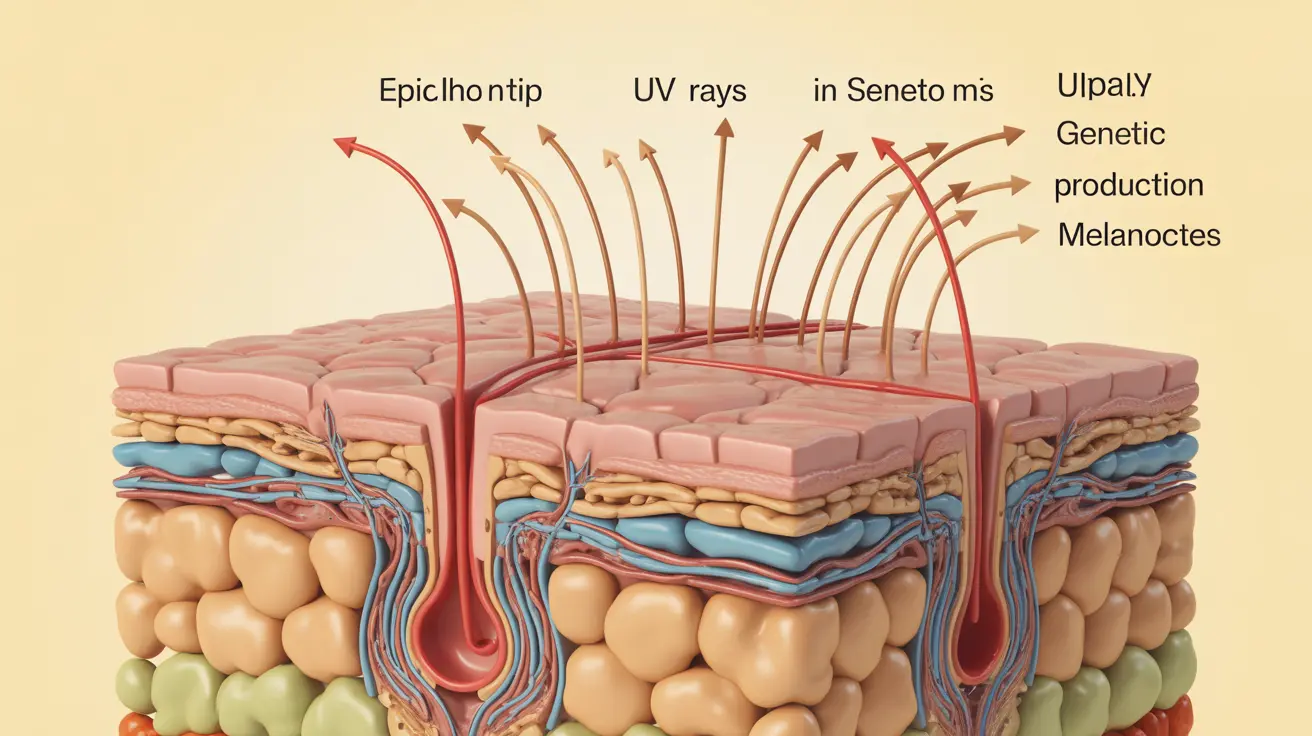Freckles, those charming spots that dot many people's skin, are more than just cosmetic features—they're a fascinating intersection of genetics and environmental factors. Understanding the genetic basis of freckles can help explain why some people develop these distinctive markings while others don't, and what role our DNA plays in their appearance.
These small, flat spots of concentrated melanin have intrigued scientists and the general public alike, leading to extensive research into their hereditary nature and formation. Let's explore the complex relationship between our genes and these unique skin characteristics.
The Genetic Foundation of Freckles
At the heart of freckle formation lies the MC1R gene, which plays a crucial role in determining how our bodies produce and distribute melanin. This gene provides instructions for making a protein that helps control the type and amount of melanin produced in our skin cells.
When certain variations occur in the MC1R gene, they can affect how melanin is distributed, leading to the characteristic spotting pattern we recognize as freckles. These genetic variations are inherited from our parents, but their expression can vary significantly even among family members.
The Role of Inherited Traits
While freckles are indeed genetic, their inheritance pattern isn't as straightforward as some might think. Multiple genes can influence their development, with the MC1R gene being just one piece of the puzzle. Other genetic factors can affect skin type, melanin production, and sun sensitivity—all of which contribute to freckle formation.
Environmental Influences on Freckle Development
Despite their genetic basis, freckles don't appear in a vacuum. Sun exposure plays a crucial role in their development and visibility. When skin is exposed to UV radiation, it triggers melanin production as a protective response, causing freckles to become more prominent or appear for the first time in genetically predisposed individuals.
Seasonal Changes and Freckle Appearance
Many people notice that their freckles become more visible during summer months and fade during winter. This seasonal variation occurs because UV exposure stimulates melanin production in specific areas of the skin, making existing freckles darker and potentially triggering the formation of new ones.
Understanding Your Skin's Response
People with fair skin, red hair, or light eyes are more likely to develop freckles due to their genetic makeup. However, this doesn't mean that people with other skin types can't develop freckles. The interaction between genetics and environmental factors creates a unique pattern for each individual.
Protection and Prevention
While freckles themselves are harmless, their presence can indicate sensitivity to sun exposure. It's essential for people with freckles to protect their skin from UV damage through regular sunscreen use, protective clothing, and limited sun exposure during peak hours.
Frequently Asked Questions
Are freckles inherited from parents or caused by other factors? Freckles are primarily inherited through genetic factors, particularly through genes like MC1R. However, their appearance and intensity are also influenced by environmental factors, especially sun exposure.
What role does the MC1R gene play in the development of freckles? The MC1R gene controls melanin production and distribution in the skin. Variations in this gene can affect how melanin is produced and distributed, leading to the development of freckles.
Can someone have freckles even if neither parent has them? Yes, it's possible to develop freckles even if neither parent has them visibly. This is because freckle-related genes can be carried and passed down without being expressed in every generation.
How does sun exposure affect the appearance and intensity of freckles? Sun exposure triggers melanin production, causing freckles to become darker and more visible. UV radiation can also stimulate the formation of new freckles in genetically predisposed individuals.
Are people with freckles at higher risk for skin damage or skin cancer? While freckles themselves aren't harmful, their presence often indicates sensitive skin that may be more susceptible to sun damage. People with freckles should take extra precautions to protect their skin from UV radiation.




